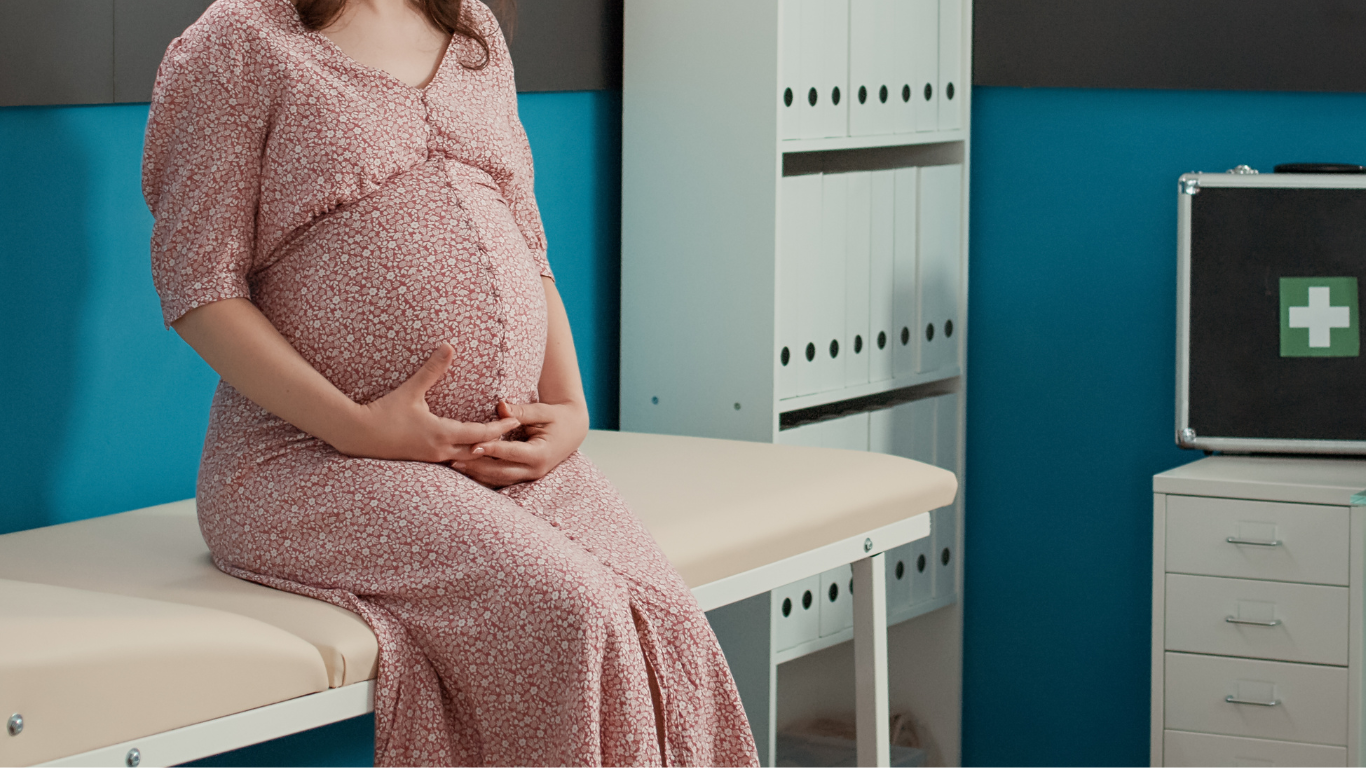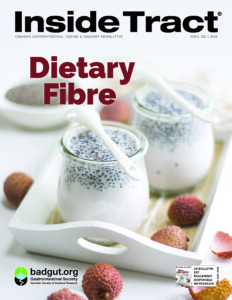
IBD & Pregnancy: Meeting the Challenge
Inflammatory bowel disease (IBD), which includes Crohn’s disease, ulcerative colitis, and ulcerative proctitis, is a complex condition that presents unique sets of problems because the disease behaves differently from person to person. Although IBD is chronic, it is not consistent; for many Crohn’s disease and ulcerative colitis patients, symptom intensity can fluctuate from remission to severe illness necessitating hospitalization. Unless the individual has recently begun taking a new medication, there is usually no way to predict when the disease will flare up or settle down.
Yet another challenge is the timing of IBD development; although it can occur in young children, it is frequently diagnosed in early-to-mid adulthood, when the excitement (and perhaps the anxiety) of family and career growth often dominate a person’s life. The medications used to treat moderate to severe IBD, although effective and beneficial, require physician and patient attentiveness. Many drugs are potent anti-inflammatories with common, though manageable, side effects, while some have very rare yet more serious side effects. Most patients have to take medications continuously to control the disease.
Another complicating factor is the complex nature of the biological processes that are at the root of the disease. Specific genes are associated with developing IBD and disease severity. However, genes alone do not determine whether a person develops the disease; there is good evidence that environmental factors play a large role. The search for new and effective treatments is difficult because no one knows the exact cause (or causes) of this complex disease.
Consider a woman who is in her mid-twenties with Crohn’s disease. Since IBD affects many in early adulthood, there are plenty of women in this situation. If she is interested in becoming pregnant, there are some very important questions that she needs resolved:
- Since I potentially carry this disease in my genes, what is my baby’s risk of getting some form of IBD? Is there anything I can do to reduce this risk?
- When should I become pregnant? Does IBD or its treatment affect my ability to become pregnant?
- What are the odds that my symptoms will worsen, or flare, at any given time? Will pregnancy cause a flare? What will happen to my baby if I flare while pregnant? What will happen to me?
- Will the medications that I’m on harm my child? Should I stop medications while I’m trying to become pregnant? What happens if I accidentally become pregnant while I’m taking them?
- Can I breastfeed while I’m taking my meds?
Fortunately, there are some solid answers available. Most IBD patients are able to have normal pregnancies with healthy babies. One of the best ways to ensure a positive outcome is for everyone involved to be well informed.
Nature & Nurture
There are particular genes that we all have but which differ slightly from person to person; some of these variations are associated with Crohn’s disease and others with ulcerative colitis. They undoubtedly play some role in determining whether a person is susceptible to these diseases, but do these gene variants come with an absolute diagnosis of IBD at some point in the person’s life? The answer is a resounding “no”. Studies that examined Crohn’s disease patients who have an identical twin found that about halfof the time, only one twin develops the disease and about half of the time, both twins develop it. Since identical twins have identical genetic information at conception, genes cannot be the only determinant of Crohn’s disease.
As well, the most-studied gene variants (within the NOD2/CARD15 gene), which are also among those most strongly linked to a diagnosis of Crohn’s, are present in the Crohn’s population at a rate of 40-50%, but they are also present in 20% of the population without IBD. Ulcerative colitis is also specifically associated with particular genes, although it seems that in this form of IBD, genetics play a smaller role than in Crohn’s disease.
The strongest risk factor for developing IBD is having a relative with the condition, particularly a first-degree relative. Although this is an alarming fact for prospective parents with IBD, we can put this risk into perspective by understanding the difference between absolute risk and relative risk.
To calculate absolute risk, we compare the number of people with a condition to the number of people at risk of developing it. For example, your “risk” of winning the lottery when buying one ticket is mainly determined by how many other people buy tickets – if one million people, including you, bought one ticket, your absolute risk is one in a million. However, imagine you have a friend who bought twenty tickets instead of just one. Your friend has a “risk” of winning the lottery that is twenty times higher than your risk; that friend has a relative risk of 20. Of course, your friend should likely keep that day job, since a twenty-fold increase of a one in a million event is still not very significant. See Table 1 for the absolute and relative risks of developing IBD, given a particular family history. Keep in mind that this data is from mixed sources and the risks range widely depending on the type of IBD, race, and the region studied.
Table 1
Number of relatives with IBD |
Relative Risk (versus general population) |
Absolute Risk (actual odds of having IBD in Canada) |
| General population (none) | 1.0 (no added risk) | 1 in 250 |
| Sibling | 1-17 | 1-17 in 250 |
| One parent | 2-13 | 2-13 in 250 |
| Two parents | 90 | 90 in 250 |
It is clear that even with the strongest familial risk factors, the odds are quite good that a child will be free of the disease. Research is still being developed that might eventually help to indicate steps that a family could take to reduce the likelihood of a child developing IBD in the future. This research includes investigations into any possible protective effect of breastfeeding and into possible links between healthy pregnancies and associated level of risk for developing IBD.
Birds & Bees & IBD
Women with IBD who are planning a family may wonder about fertility. In most situations, the ability of someone with Crohn’s disease or ulcerative colitis to become pregnant is very similar to the general population. In both, the infertility rate is about 10%. However, there are IBD-related causes of infertility that individuals should consider. One of them is the state of the disease, as active symptoms seem to reduce the ability to conceive; when symptoms are under control, fertility normalizes.
Common surgical treatments for IBD, in particular for ulcerative colitis, can result in reduced rates of fertility. In a 2005 study where researchers combined the data from several previously published studies (a meta-analysis), they found a 15% rate of infertility for women with ulcerative colitis who were being treated with medications, compared to a 48% rate of infertility in those who had removal of the colon with re-attachment of the small bowel to the anus in an ileal pouch-anal anastomosis (IPAA) surgery. This does not mean that if a woman has surgery she’ll only have a 50-50 chance of bearing a child. Fertility is the ability to become pregnant after a certain period of unprotected sexual intercourse, usually a year. For many patients who have an IPAA or other disease-related surgery and are having trouble conceiving, a longer duration of trying to have a baby can result in a successful pregnancy.
A study in Finland found that 67% of women were able to become pregnant naturally after IPAA surgery, and 72% eventually successfully conceived, compared to 88% of the disease-free control population.
Most experts think that the decrease in fertility post-surgery is due to problems in transportation of the egg from the ovary to the womb, perhaps due to internal scarring. Techniques such as in-vitro fertilization might be highly successful in those patients. Finally, strategies such as creating a temporary stoma to try to preserve fertility until a woman has finished reproduction may also be an option if surgery is unavoidable.
The Pregnant IBD Patient – Flaring for Two
Any woman who has had a moderate to severe flare of Crohn’s disease or ulcerative colitis understands how physically difficult the symptoms can be, dealing with frequent and often bloody diarrhea, abdominal pain, intense fatigue, fever, and sometimes other symptoms such as joint and eye inflammation. Disease flares can last for days to weeks, or even longer, and the resulting systemic inflammation and malnourishment can severely stress the unborn child of a woman with IBD.
What is the likelihood that a mother will experience a disease flare during pregnancy?
Evidence indicates that pregnant women are no more likely to experience a disease flare over the course of a year than those who are not pregnant. A few studies have even indicated that disease activity may slightly decrease during pregnancy and for some time afterward. Women who have active disease symptoms around the time of conception are less fortunate; a rule of thumb for both Crohn’s and ulcerative colitis is that one third will improve, one third will get worse, and one third will have constant but stable symptoms during pregnancy. There is little data regarding the severity of flares and effectiveness of treatment in pregnant versus non-pregnant patients, and there do not seem to be any differences reported so far. A small case control study looking at pregnant patients hospitalized for severe flares of colitis found high response rates to treatment, similar to that of non-pregnant patients.
There are likely two scenarios to consider for a baby’s outcome in an IBD pregnancy: a mom with low or no disease activity and a mom with significant disease activity. The vast majority of evidence examines moms who have a low burden of symptoms with Crohn’s disease and/or ulcerative colitis.
A recent meta-analysis that reviewed the results of 12 studies found that the rates of preterm birth and low birth weight approximately double in IBD patients compared to disease-free controls, and the rate of caesarean section increases by about 50%. These results are statistically significant.
In one of the larger, more recent, and higher quality studies done in North America, women with IBD were about 50-75% more likely to have a miscarriage, stillbirth, preterm birth, small-for-gestational-age baby, or a complication during labour. There were very few IBD patients with significant symptoms during pregnancy in the study. It is widely accepted that IBD moms are more likely to have a preterm birth or a smaller baby regardless of disease activity, and the vast majority of data supports this.
Less certain is whether IBD pregnancies are associated with higher rates of birth defects (congenital anomalies). The meta-analysis described above found an increased incidence of anomalies in ulcerative colitis pregnancies versus disease-free pregnancies; however, these results were mostly driven by only 2 out of the 12 studies. The flaws in these reports are that the studies’ designs did not allow for assessment as to whether disease activity, medications taken during pregnancy, or just the presence of IBD were significantly associated with congenital anomalies. Finally, to prove that a disease or a medication has a significant association with congenital anomalies, the same pattern or types of congenital anomalies should occur repeatedly. The evidence for a consistent pattern of congenital anomalies associated with IBD or the medications that treat it is very limited.
There are few studies designed adequately to examine the effect of moderate or severe flares of IBD on fetal and newborn outcomes. The number of studies that do include mostly patients with well-documented active or severe disease is small. The best study on pregnancy with severe IBD symptoms compared only 18 patients who required hospitalization for their symptoms during pregnancy to 41 IBD patients who had no disease relapses. The patients with severe relapses had significantly smaller babies, many of them with very low birth weights. In mothers who flared, 70% of deliveries were preterm and low birth weight compared to 7% of deliveries in mothers without a disease flare. Despite the fact that babies exposed to disease flares had significantly lower birth weights, and were born prematurely, their 1- and 5-minute Apgar scores (a standard method used to assess newborns) did not significantly decrease. There were no stillbirths or congenital anomalies in either the flaring or the non-flaring groups.
Therefore, despite the rates of prematurity and low birth weight deliveries, the babies exposed to severe IBD flares tended to do fairly well in the short term. However, their risk for problems such as infection, respiratory distress, and brain hemorrhage, among other health problems that plague under-developed newborns, was likely still higher than for those babies who did not endure a flare.
IBD Drugs & Pregnancy
Treatment of IBD typically follows a step-up approach. This means that early in the disease course physicians prescribe the drugs with the lowest toxicity or those that do not need the patient to take them continually to treat active symptoms. If use of these drugs at optimal doses is inadequate, then the physician switches to increasingly stronger medications that might have more side effects, or that the patient must take continually to control symptoms.
It is important to remember the following:
- Drugs are either low-risk, moderate-risk, or high-risk for the fetus; there is no medication that is zero-risk. If you have IBD and are pregnant or thinking about becoming pregnant, then talk to your physician and/or pharmacist about the risk profiles of your medications. Together, you can understand the risks and benefits while customizing the right treatment plan for you and your pregnancy.
- The evidence that supports each risk profile is fair but not excellent. To detect rare side effects that might be associated with each medication, researchers need to examine more pregnancies with exposure data, as there is currently insufficient data to draw absolute conclusions.
- Above all, it is important to talk to your physician if you want to discontinue an IBD medication or refuse a medication for pregnancy reasons. The severity of an individual’s IBD will vary. If you have had severe flares in the past and your disease is now well controlled or you are on an immunomodulator or a biologic medication, then it could be a bad idea to discontinue that medication. If you do, a significant flare during pregnancy becomes much more likely, which will also increase the odds that a pregnancy will result in a low birth weight or preterm baby. A seriously underdeveloped baby is at a higher risk of permanent harm than a baby exposed to a low-risk drug (or even moderate-risk drug) during pregnancy.
Caution: Health Canada released a statement on 2020-09-23 indicating it has reviewed the potential risk of birth defects in babies associated with the use of mesalazine-containing products in pregnant women. To learn more, click here.
Conclusions
Although the idea of having a baby while living with IBD is daunting, the improvements in medical therapy that have occurred in the past decade, combined with ever-increasing data on these sometimes complicated pregnancies, are reassuring. Women with Crohn’s disease, ulcerative colitis, and ulcerative proctitis (a milder form of ulcerative colitis) can and usually do have healthy babies. Serious flares are uncommon during pregnancy if conception occurs during a period of minor or absent symptoms. In general, most treatments for IBD, including the most effective ones, are fairly low-risk, and current data indicates that the benefits of continuing these medications during pregnancy for the mother and the fetus outweigh their potential adverse effects. Every pregnancy, person, and presentation of IBD is slightly to significantly different and the best way to ensure positive outcomes is through close communication and cooperation with the individual patient and her entire team of family physician, gastroenterologist, pharmacist, dietitian, and obstetrician.















